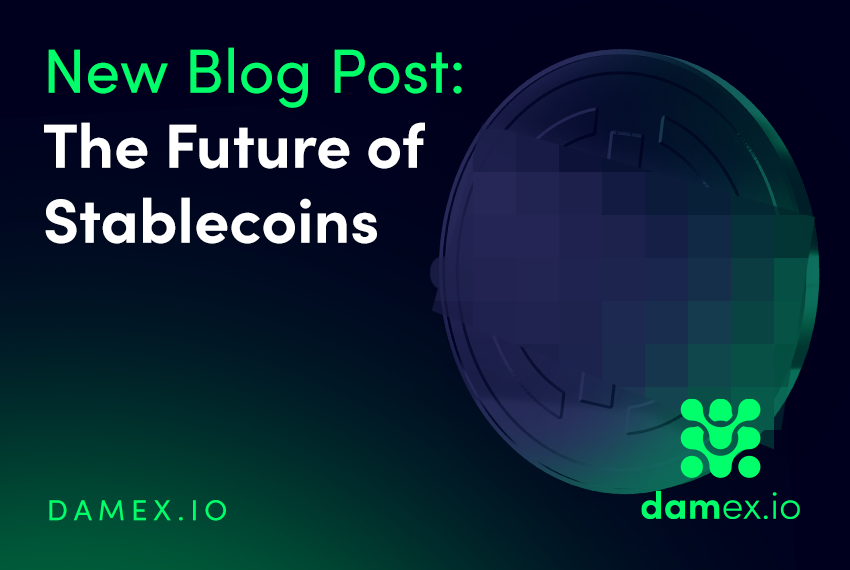Introducción
- Las stablecoins se han convertido en una parte esencial del ecosistema criptográfico. Una gran parte de DeFi no podría funcionar sin ellas y los pares de negociación más líquidos suelen contener una stablecoin.
- Sin embargo, con la llegada de nuevas normativas y la propuesta de cambios en las stablecoins descentralizadas, ¿cómo está cambiando el panorama de las stablecoins?
Con las excepciones de Bitcoin y Ethereum, se puede argumentar que la invención de las stablecoins en cadena ha tenido el mayor impacto en el crecimiento del espacio de las criptomonedas hasta el momento. No sólo son el principal activo con el que se negocian la mayoría de las criptomonedas, sino que también han permitido que DeFi funcione en gran medida. Está claro que un activo tokenizado estable tiene un enorme valor para el criptoespacio. La posibilidad de realizar transacciones en una unidad de cuenta vinculada al valor fiduciario, pero que puede funcionar en cadena, ha permitido que se produzcan grandes innovaciones, al tiempo que resulta cómodo para los usuarios.
Las stablecoins, en el centro de la polémica
Sin embargo, las stablecoins también han estado en el centro de la polémica, sobre todo con el colapso de Terra y la stablecoin UST. Aunque el mecanismo para mantener la vinculación al dólar de UST siempre iba a fallar a largo plazo (véase el excelente artículo de Vitalik Buterin al respecto aquí) ha habido otros intentos en este sentido que no han terminado en un colapso como lo hizo Terra. DAI y RAI son otras dos stablecoins que han intentado ser parcial o totalmente descentralizadas a diferencia de las stablecoins colateralizadas como USDT o USDC. RAI está respaldada únicamente por ETH, mientras que DAI está respaldada parcialmente por USDC, así como por otros activos. RAI no está vinculado a un valor fijo, pero su volatilidad es significativamente menor que algo como ETH. La dificultad estriba en que no se ha logrado un método para asegurar una paridad 1:1 sin una garantía en USD (o equivalente) (y de hecho puede ser imposible si se opera en un sistema completamente autosuficiente). Debido a los recientes problemas de censura, MakerDao (la organización detrás de DAI) es considerar la supresión del componente USDC de su garantía. Esto eliminaría la vinculación 1:1 de la AID al dólar y le permitiría "flotar libremente", es decir, perder valor con el tiempo a un ritmo lento y predecible. La alternativa es intentar defender la paridad mientras cae (como hizo Terra) y que todo el sistema acabe explotando. Por ahora, parece que este estado final de la IAD es lo más parecido a un activo verdaderamente descentralizado y estable que el mercado tendrá en el futuro.
Estado actual del mercado de criptomonedas
Teniendo en cuenta el estado actual del mercado de criptomonedas, seguirá siendo una parte relativamente pequeña del volumen total de stablecoin. Más de 90% del mercado de stablecoin está dominado por USDT, USDC y BUSD. A pesar de su naturaleza centralizada, el mercado de criptomonedas las ha adoptado como lo más parecido a una moneda estable y utilizable. Las tres son tratadas como dólares en la cadena de bloques y han facilitado enormes volúmenes de transacciones en los últimos 8 años (cuando se fundó USDT). Los pares más líquidos del mercado implican stablecoins, los pagos internacionales se resuelven fácilmente sin exponerse a una gran volatilidad y las entidades de mayor riesgo pueden resolver posibles dificultades bancarias realizando transacciones a través de criptomonedas en lugar de las vías tradicionales. No cabe duda de que los pagos con stablecoins son uno de los primeros casos de uso real del mercado de criptomonedas y, a pesar de que existen alternativas descentralizadas, cabe esperar que las tres grandes stablecoins colateralizadas sigan facilitando la gran mayoría de este flujo en el futuro.
Las stablecoins son clave para el crecimiento futuro
A pesar de las preocupaciones sobre el nivel de descentralización por parte de algunos en el espacio, el mercado valora estas stablecoins extremadamente alto debido a su utilidad en las áreas descritas anteriormente. Las alternativas descentralizadas a las stablecoins tendrán su lugar para operaciones que sólo tocan otras partes del mundo de las criptomonedas. Sin embargo, para dar servicio a las empresas reales y a los participantes tradicionales del mercado tiene que haber un vínculo en el valor de los activos de algunas criptodivisas con la economía tradicional. Por este motivo, cabe esperar que USDT, USDC, BUSD y otros proyectos similares sigan creciendo con el tiempo. Llega la regulación que cambiará las cosas aún más a favor de este tipo de stablecoin y también debería aliviar algunas preocupaciones sobre la calidad de la garantía que estos proyectos tienen para respaldar sus respectivos proyectos. Siempre habrá fricciones entre los aspectos centralizados y descentralizados del mercado de las criptomonedas, pero ambos están aquí para quedarse a largo plazo. Esperemos que la regulación tenga en cuenta a ambas partes y ayude a facilitar una mayor innovación. Lo que es seguro es que las stablecoins desempeñarán un papel clave en cualquier crecimiento futuro a medida que el mercado madure hacia su siguiente fase.







